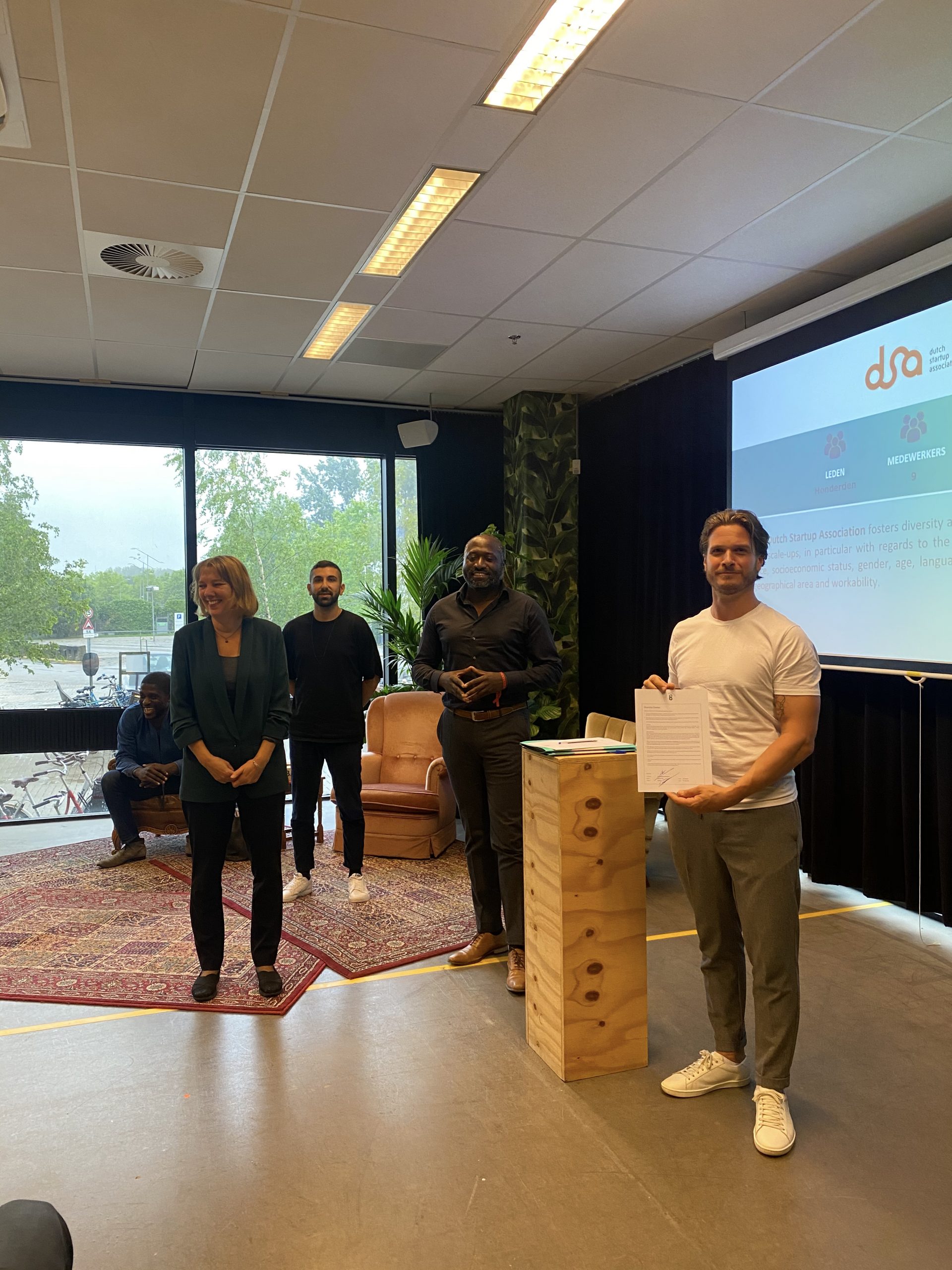
Research has shown that diverse teams perform better. This is particularly the case in innovation technology. After all, people with different backgrounds and views provide creative insights. Nevertheless, in the business world in 2020 there is still room for improvement in this area, especially when it comes to cultural-ethnic diversity. In a five-part series, Innovation Origins searches for answers to the question of why this is a major social problem and above all: How can we fix it?
All large companies once started out small. If you want to make sure that the companies of the future have diversity in their DNA, it’s best to start with start-ups and scale-ups. To this end, the Dutch Start-up Association (DSA) has committed itself to signing the Charter for Diversity. The DSA has also developed a number of tools to help its members on their way to diversity.
“Diversity is one of the most important topics at the moment. You simply can’t afford to ignore it.” comments Thomas Vles, director of the DSA, “This also applies to the DSA. Diversity is important to us. Inequality is inexcusable. But it has to be more than symptom management. A minimum percentage of women in business is a step in the right direction, but we can do so much more.’
Impact
Why is promoting diversity in start-ups a good thing? “If you begin with start-ups, you make sure that diversity really is in the DNA of the companies of the future. In five years’ time, a large number of these start-ups will have grown into successful companies. All major companies, from Facebook to Bol.com, began as start-ups. By including diversity and inclusiveness in policies early on, you can make a huge impact. Start-ups are the driving force behind innovation and job creation and are necessary for a sustainable economy.
Charter for Diversity
Last July, the DSA signed the Charter for Diversity, committing itself to the purposes of the SER to promote diversity and inclusiveness in business. On the occasion of that signing, the DSA also made a number of agreements with the Department of Diversity in the SER’s company. In the meantime, for example, the DSA has conducted a survey among the affiliated start-ups and scale-ups on the composition of their teams. In addition, the DSA will actively seek to recruit its members to join the Diversity Charter. “What we are doing is pre-selecting larger start-ups or scale-ups. Often they already want to do something with diversity and inclusiveness, but we are able to convince them to take action. Up until now B. Amsterdam and Wordproof have already signed up and there are a number of other scale-ups in the queue.”
Diversity helpdesk
According to Vles, start-ups and scale-ups want to work with diversity themselves. They just don’t know where to start. “That is also why we have set up a Diversity Desk for our members. We don’t have all the answers ourselves, but work together with specialists. Compare it to a general practitioner: he or she doesn’t have all the knowledge in-house either, so they send you on to a specialist. In this case, that would be the SER, special departments at municipalities or specialized companies and consultants.”
Zero measurement and annual progress
As part of the agreements with the SER, the DSA recently carried out a baseline measurement to map the level of diversity in the start-up ecosystem. The results of this research as stated in the report ‘Diversity and inclusion’ are not surprising. For example, 62% of the team members are male, 67% have a Dutch background, 70% are white, 30% have a bachelor’s degree and 46% a master’s degree. The average age is between 20 and 39 years. Also, 41.5% of male team members own shares compared to a mere 1.5% of the women, and 46% of white team members are shareholders compared to 15.6% of team members of color.

Vles: “The image that start-ups are populated by mainly white men of a certain age therefore appears to be quite accurate. But what was initially just a feeling is something we now know with certainty. So we no longer need to discuss it, but can take action. This zero baseline serves as a starting point. We are going to repeat this measurement annually to monitor the progress of our supporters.”
Deeds, not words
In addition to observations about the current situation, the report ‘Diversity and inclusion’ also contains recommendations. “The most important thing is to look at what you can do instead of just making observations,” says Vles. “And then you have to set goals, preferably as concrete as possible. Don’t just act reactively, but make sure that diversity is really embedded in your business.”
According to Vles it shouldn’t just be words, like a nice story on your website. “Talking is not enough, you actually have to take action or ‘walk the walk’, as they say in English. After Black Lives Matter became an issue in the U.S., for example, it sometimes became a PR thing to do ‘something with diversity.’ We are striving for more.”
Better performance can also be a motive to pursue more diversity. Vles explains: “Research by the SER, among others, shows that diverse companies perform better. This is only logical, assuming that your company should be a reflection of your sales market. If you look at the Dutch market, for example, 50 % of the market is made up of women and 25 % have a different ethnic and cultural background. Surely it’s only logical that your company should have the same distribution?
Read other articles in this series about diversity:
Diversity, innovation and entrepreneurship: the Netherlands shows its true colors
Adopt diversity-promoting measures across all fronts
Diversity in technology calls for role models





